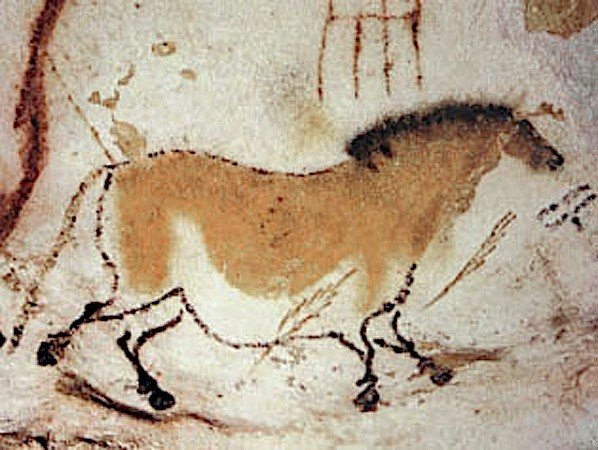Lascaux is a treasure trove of ancient art and history, offering a glimpse into the distant past with its stunning Paleolithic paintings. One of the highlights is undoubtedly the famous Lascaux Cave, where visitors can marvel at intricate cave paintings that have captivated people for generations. For a more in-depth experience, the Lascaux IV International Center for Cave Art provides an incredible replica of the original cave, allowing for an immersive exploration without harming the ancient artwork.
Additionally, the Rouffignac Cave, known for its remarkable mammoth drawings, presents another fascinating opportunity to step back in time. Meanwhile, the National Prehistoric Museum of Les Eyzies-de-Tayac-Sireuil enriches visitors’ understanding of prehistoric life with its extensive collection of artifacts and exhibits.
Beyond these historical gems, the Vezere Valley envelops Lascaux in natural beauty, offering picturesque landscapes that enhance the journey through time. This region also presents an excellent chance to delve into local culinary delights, adding another layer of enjoyment to the exploration.
Lascaux, with its rich tapestry of history, art, and nature, invites a journey of discovery that is both educational and awe-inspiring. Each site, from the caves to the museum, plays a vital role in piecing together the story of our ancient ancestors, making a visit to this area a must for anyone interested in the origins of art and humanity.
Explore the Lascaux Caves
As soon as I walked into the Lascaux Caves, it felt like stepping into a time machine, landing in the midst of the Paleolithic era, surrounded by some of the most awe-inspiring ancient art.
Nestled in the southwestern part of France, these caves are a treasure trove for anyone with a keen interest in history and prehistoric art. Recognized as a UNESCO World Heritage site, the Lascaux Caves boast an array of prehistoric cave paintings that are believed to be more than 17,000 years old. These paintings feature a variety of animals, including horses, deer, and bulls, all depicted with an impressive attention to detail and artistry that highlights our ancestors’ exceptional skills.
For an immersive experience, a visit to the Lascaux IV International Center for Cave Art is highly recommended. This center offers a meticulously crafted replica of the original cave, allowing visitors to marvel at the paintings up close.
Through guided tours, the center provides detailed insights into the historical background, the significance of the cave paintings, and the techniques employed by prehistoric artists. This presents a unique opportunity to appreciate the intricacy and beauty of Paleolithic art firsthand.
Beyond the Lascaux Caves, the region is rich with other noteworthy sites. The Rouffignac Cave, for instance, is celebrated for its prehistoric art and an impressive collection of mammoth drawings. Exploring this cave with a guided tour enriches one’s understanding of the prehistoric era and the majestic creatures that once roamed the earth.
For those interested in a comprehensive view of the area’s prehistory, a visit to the National Prehistoric Museum of Les Eyzies-de-Tayac-Sireuil is indispensable. The museum houses an extensive collection of artifacts and fossils that shed light on the lives of early humans. This museum visit offers an excellent chance to learn about the diverse cultures that once flourished in this region.
For nature enthusiasts, the Vezere Valley offers an idyllic setting. This picturesque valley is filled with archaeological sites and provides ample opportunities for hiking and nature walks. As you traverse the valley, you’ll encounter ancient caves, rock shelters, and various remnants of our prehistoric ancestors, allowing for a connection with both the art and the natural landscapes that inspired it.
Visit the Lascaux International Center for Cave Art
Exploring the Lascaux IV International Center for Cave Art is akin to stepping through a gateway into the past. This center serves as an invaluable resource for understanding the art and culture of the Paleolithic era, offering visitors a window into the ancient world through its meticulously crafted replicas and exhibits. These replicas bring the awe-inspiring talent of our prehistoric ancestors to life, so closely mirroring the original cave paintings that you’ll feel as if you’re experiencing them firsthand.
At the center, detailed guided tours and educational experiences provide a comprehensive look into the art, sharing insights into the sophisticated techniques employed by ancient artists. This hands-on approach not only deepens your appreciation for the skill involved in creating these works but also sheds light on the significance behind the art itself.
Wandering through the center, you’re enveloped in vivid depictions of ancient life, each painting telling a story that connects us to our distant past. The center not only showcases the beauty and complexity of Lascaux cave art but also celebrates the ingenuity of our ancestors, making it a profoundly immersive experience.
Visiting the Lascaux International Center for Cave Art offers a unique opportunity to engage with our ancient history and appreciate the richness of prehistoric art. For anyone interested in stepping back in time and exploring the depths of human creativity, a trip to the center promises an enlightening journey through the annals of our shared heritage.
Discover the Charming Village of Montignac
Tucked away in the serene French countryside, the quaint village of Montignac offers a unique opportunity to explore a place rich in history and natural beauty. Here’s why Montignac should be on your travel list:
- Wander Through the Historic Old Town: Montignac’s historic heart features winding cobblestone streets flanked by ancient homes that tell tales of bygone eras. A walk here is like traveling through time, offering a tangible connection to the past.
- Discover the Château de Montignac: The majestic Château de Montignac is a window into the region’s rich heritage. Its stunning architecture and the stories of the noble families who lived there bring history to life. Beyond its historical significance, the château serves as a cultural venue, hosting various exhibitions and events year-round.
- Experience the Peaceful Vézère River: The Vézère River, with its gentle flow, adds to Montignac’s charm. A stroll along its banks isn’t only relaxing but also offers picturesque views that encapsulate the essence of the French countryside.
- Dive into Cultural Riches: Montignac is a treasure trove of culture and history. From visiting local museums that showcase the village’s legacy to exploring archaeological sites, there’s much to learn and admire here. The village’s commitment to preserving and celebrating its history is evident in the educational opportunities available to visitors.
Montignac provides a tranquil retreat from modern life’s fast pace, offering a blend of historical exploration and natural beauty. It’s a place where every corner has a story, inviting you to become part of its ongoing narrative.
Take a Leisurely Stroll Along the Vézère River
Wandering by the Vézère River in Montignac, I find myself surrounded by an atmosphere of calm that truly stands out. This river, with its clear waters and lush banks, serves as an ideal backdrop for a relaxed walk, offering breathtaking views that fully engage the senses.
The gentle sound of water flowing acts as a natural lullaby, promoting a sense of ease. A light breeze whispers through the foliage, bringing with it the fresh aroma of the outdoors. Each step reveals more of the river’s hidden treasures and picturesque spots, highlighting the area’s natural allure.
The Vézère River, winding through Montignac, transforms the bustling town into a haven of peace. Walking along its edge, I feel a profound sense of release, as though the river’s flow has carried away all concerns. This stroll isn’t just a physical journey but a mental one, allowing for a break from daily stresses and a reconnection with the natural world. It’s an opportunity to ponder, enjoy life’s simple joys, and soak in the serenity the river offers.
Montignac isn’t just known for its scenic river but also for its rich history, including the famous Lascaux Caves nearby, renowned for prehistoric cave paintings. This historical context adds depth to the walk, making it not only a visual experience but an educational one as well, linking us to the ancient human history that unfolded along these riverbanks.
Indulge in Local Cuisine at a Traditional French Restaurant
Embarking on a journey along the Vézère River in Montignac, my adventure leads me to the heart of Perigord cuisine at a quaint French restaurant. This experience allows me to dive into the rich and savory flavors unique to the local fare. Let me guide you through some of the quintessential dishes that capture the true essence of Perigord, enriching your culinary journey.
Firstly, Foie Gras stands out as a celebrated dish, crafted from either duck or goose liver. This delicacy, known for its smooth texture and subtle taste, represents a pinnacle of Perigord gastronomy. Its preparation, rooted in tradition, showcases the meticulous care and expertise local chefs put into preserving their culinary heritage.
Next, we’ve Confit de Canard, a testament to the region’s love for duck. This dish, featuring duck leg slowly cooked in its own fat, is a marvel of flavor and tenderness. It’s a perfect example of how time-honored cooking methods can elevate simple ingredients to extraordinary levels of taste.
For those with a sweet tooth, the Tarte aux Noix is a must-try. This walnut tart, with its buttery crust and rich filling, embodies the local penchant for incorporating nuts into desserts. It’s not just a treat; it’s a dive into the region’s abundant walnut groves, translated into a piece of culinary art.
And what’s a meal without the perfect wine to accompany it? The local wines, such as Bergerac and Monbazillac, aren’t just beverages; they’re stories in a bottle, reflecting the region’s terroir and winemaking traditions. These wines perfectly balance the robust flavors of Perigord cuisine, enhancing the dining experience.
Dining at a traditional French restaurant in Lascaux is more than just a meal; it’s an immersive experience into the heart of Perigord culture. Whether you’re a culinary enthusiast or simply eager to explore local traditions, the authentic flavors of Perigord offer a memorable journey through its rich gastronomic landscape.









